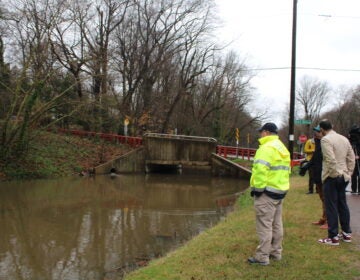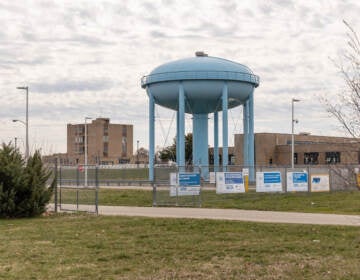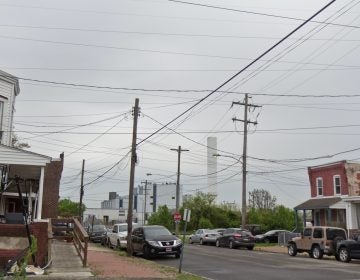Johnstown reconsiders its industrial rivers for recreation
Listen-
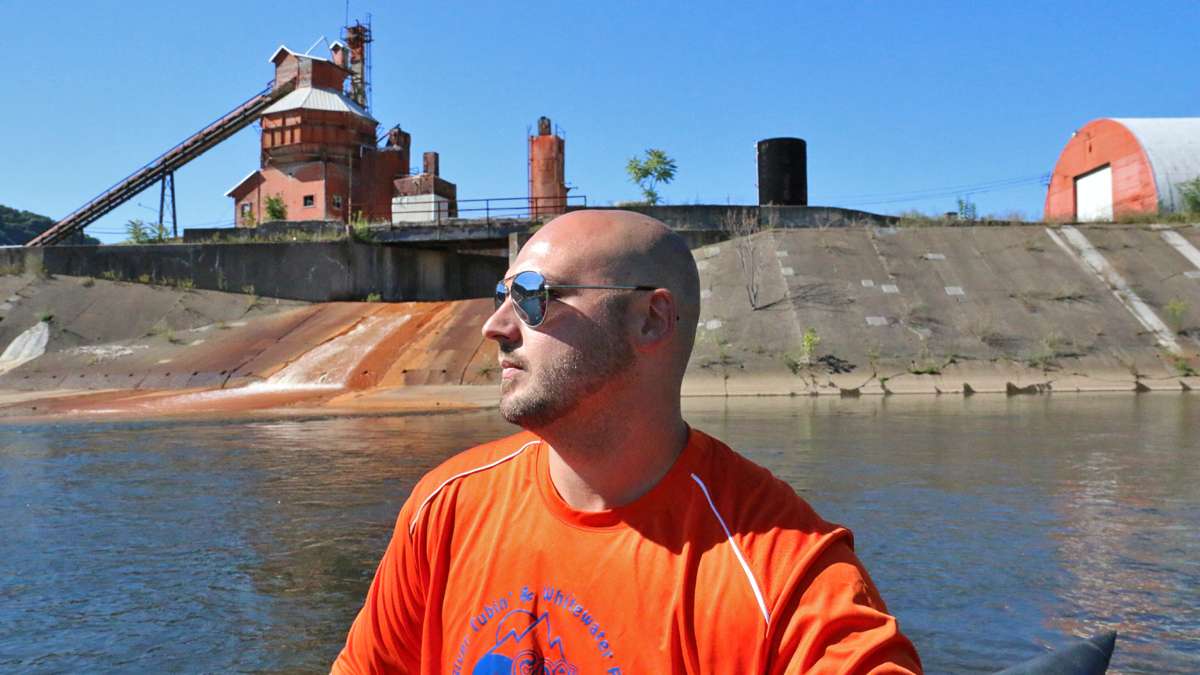
Bob Bridges of Coal Tubin' steers an inflatable boat called the shredder down the Stonycreek River in Johnstown. (Lindsay Lazarski/WHYY)
-
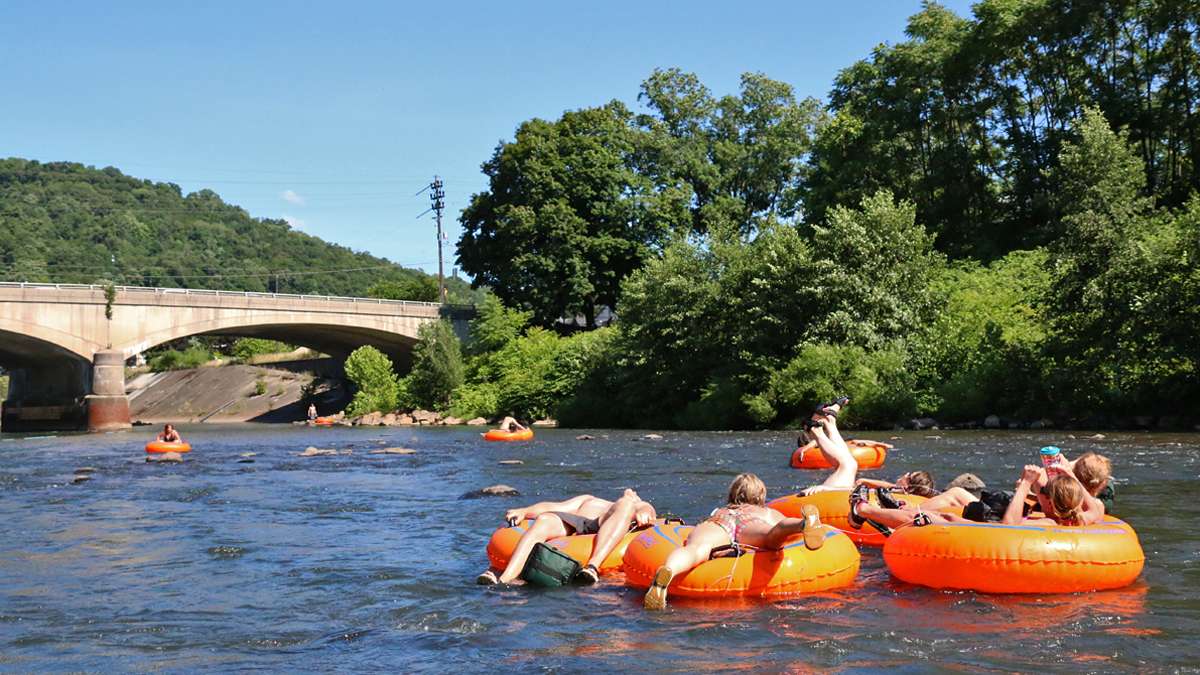
A group of tubers float down the Stoneycreek River. Bob Bridges and others who use the waterways for recreation, say it has been difficult to change people’s perception about the rivers in Johnstown. (Lindsay Lazarski/WHYY)
-
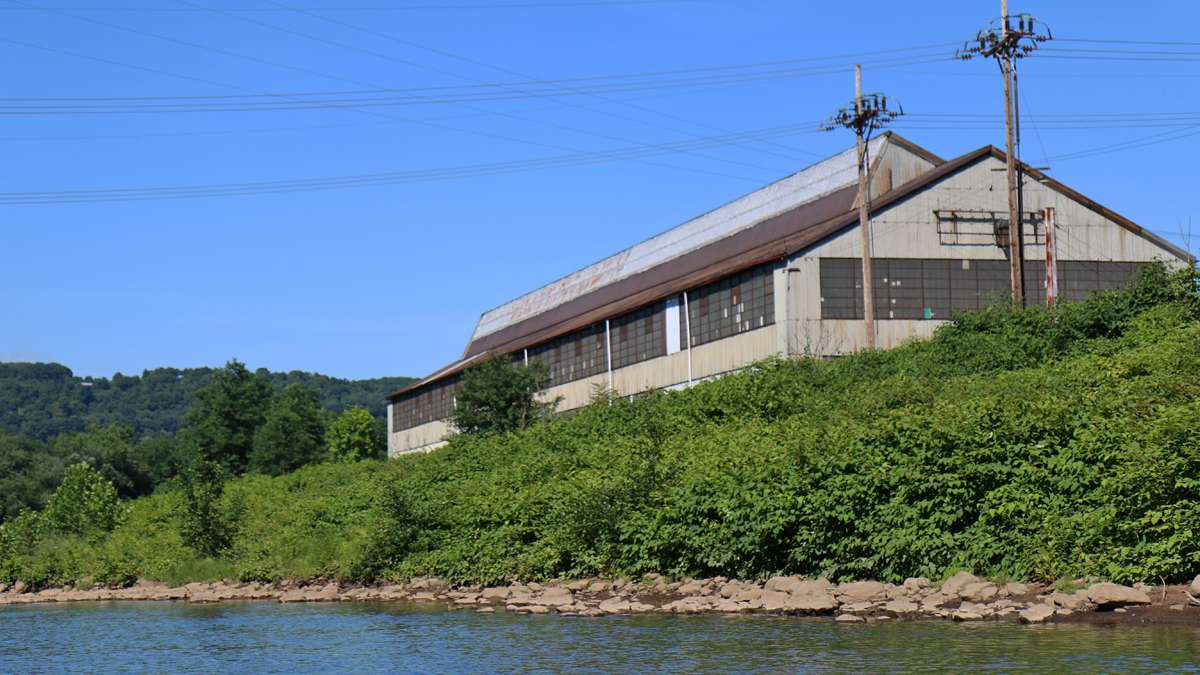
Industrial buildings and shuttered mills can be seen along the banks of the Stonycreek River. (Lindsay Lazarski/WHYY)
-
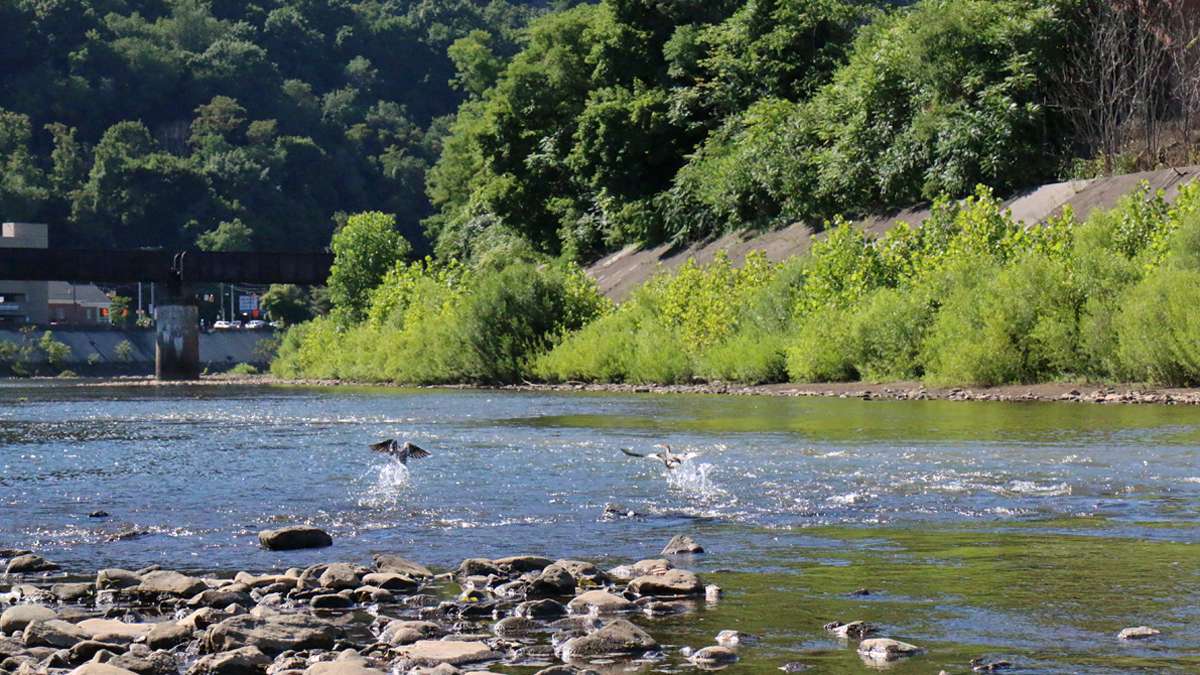
In the past, the rivers in Johnstown were used for the coal mining and steel industries, but today the water is clean and home to trout, bass, beavers, blue herons, ducks and other wildlife. (Lindsay Lazarski/WHYY)
-
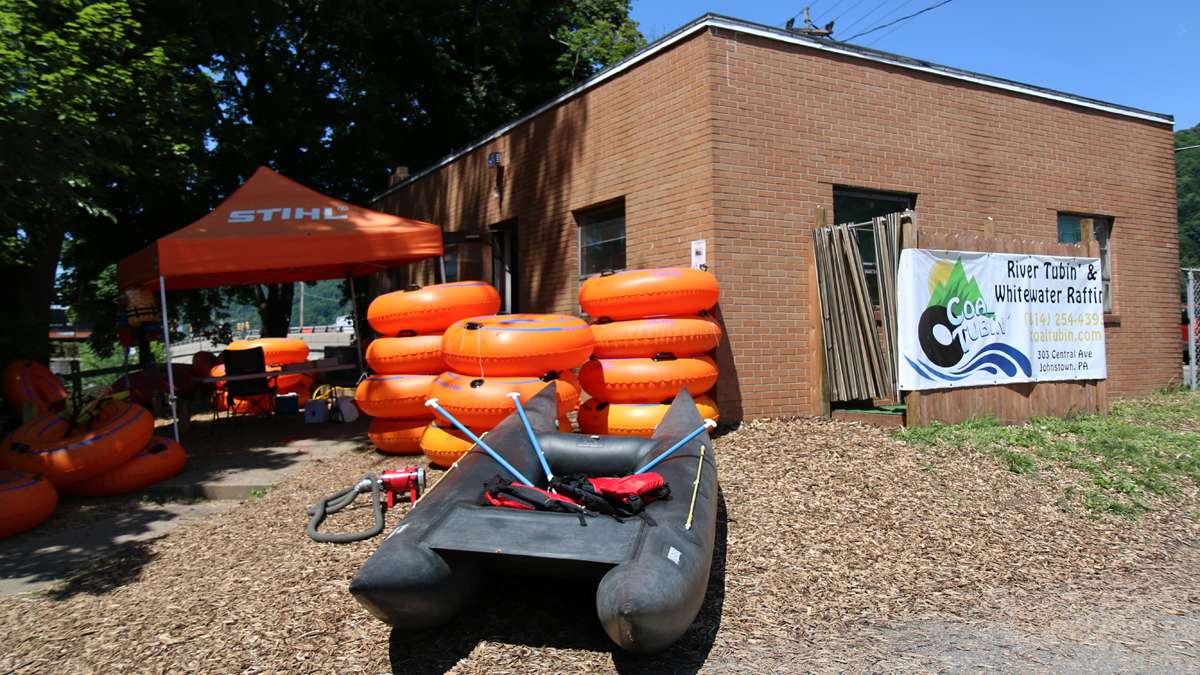
Coal Tubin’ organizes recreational tours down the Stonycreek River in Johnstown, Pa. (Lindsay Lazarski/WHYY)
-
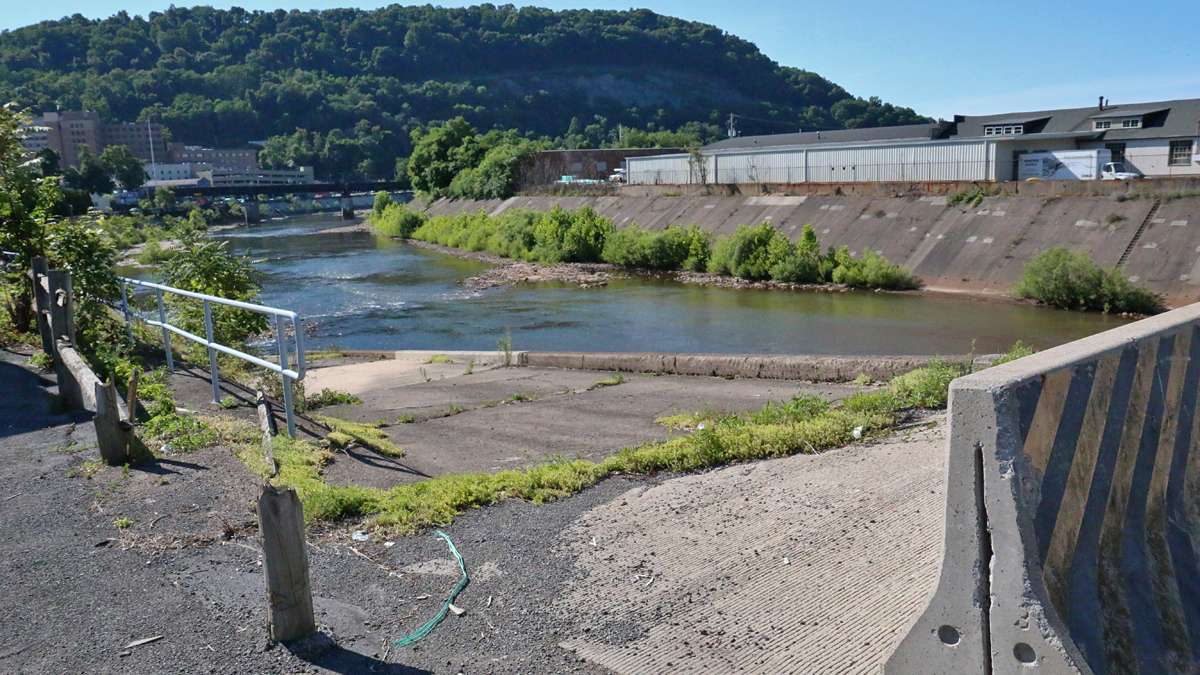
One of the access points to the Stonycreek River that is hidden behind a used car dealership. (Lindsay Lazarski/WHYY)
-
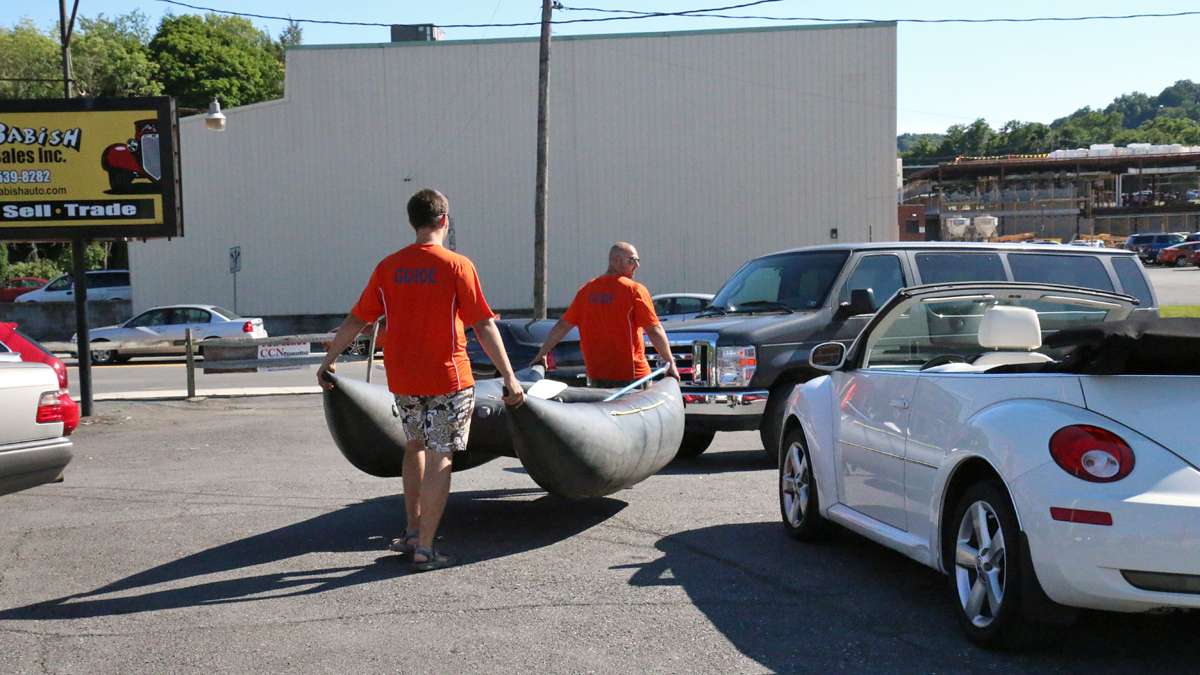
Bob Bridges and Matthew Wehner of Coal Tubin’ load the shredder into a van at the used car dealership. (Lindsay Lazarski/WHYY)
As Johnstown works to attract new residents, new businesses, and new types of industry, its rivers are also getting a second look.
On a recent summer day, Bob Bridges inflated a boat called the shredder, loaded it on a trailer, took it to an inconspicuous pull off, and launched it into the Stonycreek River.
Bridges, born and raised in Johnstown, and now managing a recreational tubing company called Coal Tubin’, said not so long ago that simple boat launch was not possible. “As I was growing up we always knew we were home because of the smell the river put off. It used to be orange,” he said. Johnstown is an unequivocally industrial town. Historically, the rivers provided water for the coal mines and steel mills in the region, and industry flushed waste into those same rivers, all but killing them.
But as Johnstown reevaluates what kind of place it wants to be – the city is working to attract new residents, new businesses, and new types of industry – the three rivers that frame the city have also become part of the discussion. What the rivers can mean to Johnstown is still under discussion, but already a lot has changed.
Today, the water is clear, odorless, and really pretty. Active acid mine drainage still exists in some spots and remnants of old industrial buildings dot the river bank, but the waterfront is also lined with vegetation (albeit some of it invasive) and frequented by wildlife. In the water, fish can now survive. And humans, too.
Luke Miller, from Somerset, was floating down the river with some family.
“This is one of the untapped resources in this part of Pennsylvania and we should all be thankful that we have the opportunity to experience it,” he said.
Miller and his group got out of the water by the Coal Tubin’ office, headquartered in a tiny building next to a bridge, and Bridges kept floating downstream. Right past the bridge, the river changes from a natural environment to an industrial one, with tall steep cement walls lining the river on both sides.
It looks like a concrete canyon. “It’s not pretty,” Bridges said. “I don’t think they tried to make it pretty.”
Flood City
The town’s moniker is Flood City. The first deadly flood hit in 1889. But even after that, says historian Richard Burkert, in 1917, urban planners drew up ambitious blueprints that used Johnstown’s waterways, and even envisioned colonnaded walkways along the rivers. That never really happened, because there was another flood in 1936. In a Universal Newsreel broadcast from that time the announcer cried out, “Everywhere, it’s flood, fire, famine and disease. Headlines scream horror not equaled by war!”
Burkert said “ultimately I think the attitude towards the river changed and you had people who had gone through two killer floods in less than 40 years, and something had to be done.” A major channelization project in the late 1930s, supported by President Franklin D. Roosevelt, cemented about nine miles of river through the city. The reinforced walls are supposed to quickly funnel water through town without letting it wreak too much havoc. The banks gave peace of mind but, Burkert said, “Johnstown is a river town and we did not have access to our rivers.”
From floods and industry, to recreation
Today, Johnstown is a depressed town with a population of about 21,000. Industry is significantly smaller than it once was. The rivers, once lifelines for steel mills, are starting to look like assets for recreation. The city’s economic development office has worked to open access to the water using Army Corps of Engineers maintenance ramps and over $6 million in state, federal and local funds have gone into cleaning up just the acid mine drainage. As the Stonycreek River’s health rebounds, some stakeholders believe Johnstown’s natural resources could be a big part of the town’s economic recovery.
“I think we should be promoting Johnstown as the Moab of the East. North Carolina of the North,” said Brad Clemenson.
Clemenson works with Lift Johnstown, a group focused on improving the city. They help organize an outdoor adventure festival, coming up in October, to help put Johnstown on the map. He says tourism can be a gateway to attracting people to settle in Johnstown.
“Anything you want to do outside, it’s all around here in the Laurel Mountains that surround Johnstown. So we’ve really been trying to promote that as the local catalyst to maybe first come here and recreate, but discover what we have to offer,” he said.
Challenges Back on the Stonycreek, Bridges steered the shredder up to an Army Corps of Engineers ramp, and towed the boat up it to wait for a ride. He came out into a car dealership parking lot at a busy intersection. From the street, the ramp is neither visible nor marked. “Unless you know where it’s at people won’t even know it’s here,” Bridges said.
Most of the ramps are kind of hidden. Although at least one ramp in town is well marked, many people still don’t know they can finally get into their rivers. Coal Tubin’s customers are mostly from out of town, from as close as Pittsburgh and as far as Philadelphia and New Jersey. Owner Chad Gontkovic said it’s been a struggle to acquire city-owned property along the river to expand his business, something he attributes to city officials who don’t share his vision for the city.
Downstream, where the Stonycreek blends with the Little Conemaugh to form the Conemaugh River, St. Mary’s Byzantine Catholic Church hosts a monthly party called Jazz Along the River. The river is not actually visible from the church pavilion because of those cement banks. It’s mostly an older crowd that gathers to eat pierogies and stuffed cabbage, to listen to music and dance. George Caddy, 64, said he’s glad the river is getting some attention, but also a little surprised.
“I think that once people my age are gone, that there will be an even better transformation,” he said. “We and my contemporaries have a habit of thinking, maybe the steel mills will come back”. Caddy paused. “It’s not coming back.”
He says younger generations have other ideas for Johnstown and just maybe they’ll work.
WHYY is your source for fact-based, in-depth journalism and information. As a nonprofit organization, we rely on financial support from readers like you. Please give today.



